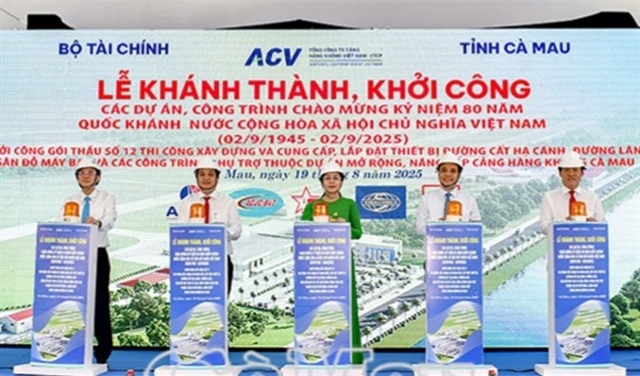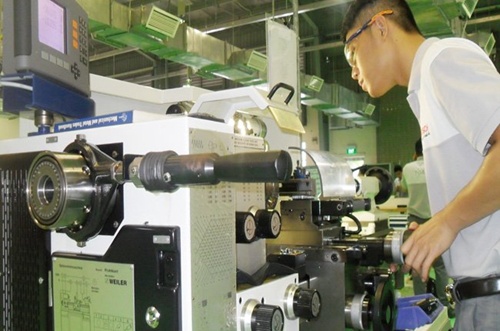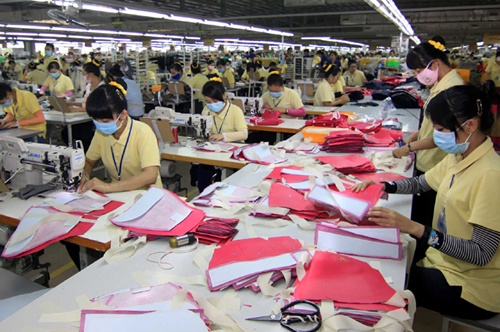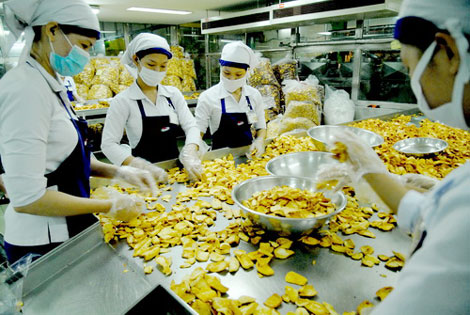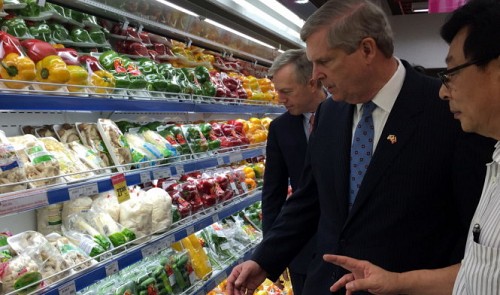VN's economic growth expected to reach 6.9%
VN's economic growth expected to reach 6.9%
Viet Nam's economic growth is expected to edge up further to 6.8-6.9 per cent in 2016 and 2017, thanks to the continued strong performance of domestic private demand, according to an economic and social survey for Asia and Pacific 2016.
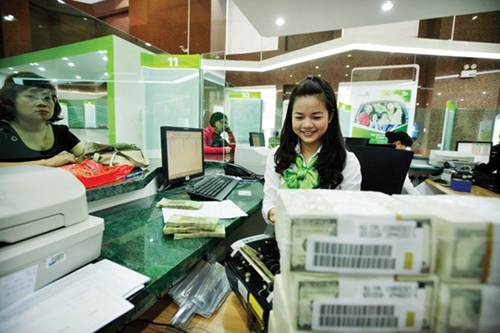
The survey, released yesterday by the UN Economic and Social Commission for Asia and the Pacific (ESCAP), said that recovery in Viet Nam's domestic demand gained momentum. Favourite consumer sentiments were underpinned by low inflation, which dropped to 0.6 per cent in 2015 from 4.1 per cent in 2014 and more than 11 per cent on average in the preceding three years.
Total investment grew by 9 per cent in 2015 amid robust FDI inflows and rising Government expenditures, marking completion of the country's five-year planning cycle.Exports of foreign-invested, higher-value sectors, such as mobile phones and electronics, continued to expand rapidly, while commodity exports were more subdued. In addition to diversification into higher-value products, a competitive exchange rate helped to boost exports in the manufacturing sector.
Consumer spending would be supported by increases in real incomes and credits, the survey indicated. Investment should benefit from Government measures to enhance the business environment, including the March 2015 resolution on improving the ease of paying taxes and border clearance procedures.
The Trans-Pacific Partnership trade agreement is expected to attract more foreign investment to build up export capacity, although more stringent environmental and labour requirements may raise production costs in the short run.
The conclusion of the free trade agreement with the European Union, which accounts for one fifth of total exports, would provide a boost to the economy.
Despite strong growth performance in recent years, macroeconomic policy management remains a challenge, according to the survey.
On the monetary front, reported nonperforming loans have declined to about 3 per cent of total loans; this improvement is due in part to transfers of default credits to the country's asset management company, which had purchased roughly $10 billion in bad debts as of October 2015. The resolution of these bad debts, however, has been slow in the absence of an adequate legal framework.
On the fiscal front, countercyclical fiscal policy during the past few years has weakened the country's fiscal position. The budget deficit reached 6.6 per cent of GDP in 2015, while public debt edged up to 61 per cent of GDP. Declining oil revenue and a further cut in corporate income tax rates strained revenue collection.
Amid increasingly limited access to concessional external finances, the Government has relied mainly on domestic debt, which involves higher borrowing costs and results in shorter maturity of the public debt profile.
Productivity key
The survey noted that as nations begin implementing the 2030 Agenda for Sustainable Development, the next phase of Asia-Pacific economic growth should be driven by broad-based productivity gains.
It emphasises that this will require higher, targeted fiscal spending, enhanced skills, better infrastructure and improved agricultural productivity.
To boost productivity, the survey recommends a cross-sectoral and integrated approach. Efforts should be strengthened to boost agricultural productivity and foster rural industrialisation and urban-rural linkages.
Improvements in knowledge and skills will also be critical to enable absorption of the large pools of surplus labour that are being released in the rural sector.
The survey also highlights specific policy issues, such as improving female labour participation, enhancing resilience to natural disasters, and dealing with population ageing challenges, economic diversification and service sector development, as well as tax policy and administration reforms.
Nguyen Anh Duong, Deputy Head of the Central Institute for Economic Management's Department for Macroeconomic Policy and Integration Studies, said improving productivity is crucial to help Viet Nam increase its competitiveness.
The sustainability of the economic growth depends on the foundations of productivity, the business environment, and encouraging businesses and labourers to share benefits from the economic growth process, he said.
Productivity in Viet Nam was driven by both macro factors, including international integration and market-oriented reforms, and micro factors, including education and training and other policies such as policies relating to renewing science and technology, he said.
He noted that productivity growth in Viet Nam faced some challenges, including slow recovery of productivity gains, lagging behind many other countries in the ASEAN region.
For example, during the 2009-2014 period, the productivity growth rate of Viet Nam was 4.64 per cent, equivalent to half of that of China.
In addition, the country also faced a low competitiveness capacity among Vietnamese workers in comparison with other countries, coupled with a "brain drain" dilemma.
Duong suggested measures to help improve productivity in Viet Nam, including long-term reform; renewing approaches in education, training, science and technology; strengthening linkages between education quality with businesses' demand for workers; promoting the central role of labourers in businesses; and fostering linkages between domestic and foreign businesses.


